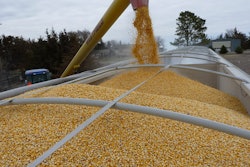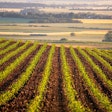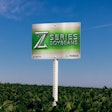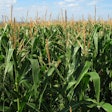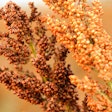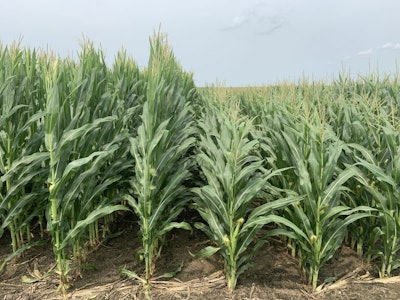
Corn farmers face many hurdles, including pressure from weeds, insects, diseases and unpredictable weather conditions that have increased in frequency and severity.
Bayer Crop Science thinks short corn stature can help producers tackle these challenges.
Bayer says these new shorter-stature corn plants, known as the Smart Corn System, will be 30% smaller with the same yields. The system is designed to help protect from crop yield loss due to increased lodging and greensnap tolerance in high winds and challenging weather conditions.
Short corn traits
- The target plant height of short stature corn hybrids will be less than 7 feet versus 9 to 12 feet for a traditional corn hybrid
- Shorter height allows for more flexible timing and the ability to use ground application of other crop inputs, like fungicides, insecticides and nitrogen
- Target ear height will be greater than 2 feet to maintain compatibility with standard harvest equipment
- Ear size is similar to that of current corn hybrids
- Due to improved plant standability, they will allow farmers to explore higher planting densities, providing the potential to produce more on every acre
Withstanding extreme weather events
Farmers are facing extreme weather events at an increasing pace. In 2020, a severe derecho in Iowa leveled grain fields with winds greater than 100 mph, causing $11 billion in damages.
The short stature hybrids have less height than standard hybrids and deeper root penetration into the soil, which increases standability in high wind events.
National product rollout sometime in 2024
According to reports, Bayer expects to raise about 60,000 acres of the corn in the next year.
The company plans to roll out the seeds nationally in 2024 and expects it to spread to more than 700,000 acres.


